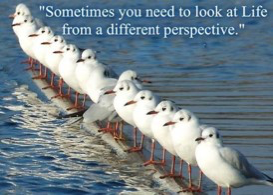In healthcare and many other industries, consolidation of competitors (i.e., mergers and acquisitions) has made cross-selling a logical strategy for driving growth and improving sales productivity. Even within organizations, companies have implemented cross-selling efforts to introduce new products and expand their footprint within an existing customer base.
From the outside, the development and implementation of a cross-selling program can seem like an easy call. It’s supposed to be an automatic game changer. You sell more and faster, exceed quotas and capture additional market share. The customers who have loved you in the past will welcome you with open wallets. Right?
Well maybe not! While many cross-selling programs are effective, many more create confusion that lowers productivity, disappoints customers and minimizes margins. If not planned properly, cross-selling can drive you crazy.
If you are considering a cross-selling program or find yourself on the implementation end of someone else’s game plan, the following six guidelines may reduce a measure of anxiety on the frontline and executive level.
- Listen to Reports From Your Front Line Sales Management.
 This is what we often hear from Regional Sales Managers and Frontline Sales Directors charged with rolling out a new cross-selling program. See if any of these sound familiar to you.
This is what we often hear from Regional Sales Managers and Frontline Sales Directors charged with rolling out a new cross-selling program. See if any of these sound familiar to you.
- “Nobody knows who owns this account.”
- “There is no clear direction on how to coordinate selling processes between ourselves and the other teams.”
- “My colleagues won’t listen to me about how to approach this customer.”
- “My customers are fed up with twice as many sales representatives calling for appointments.”
- “My customer said she isn’t interested in this product. Now what do I do?”
- “My customers are confused about who they should call for service. How can we get back to one-stop service?
- “We’re getting lots of introductions and meetings…but no new sales.”
We understand the inclination of Regional Sales Managers and Frontline Sales Directors to complain when senior executives develop a new game plan. These comments, however, require attention. Get ahead of the tactical issues before they impede program success.
- Create a Common Understanding of Cross Selling.
 Much of the difficulty and confusion experienced by Regional Sales Managers and Front Line Sales Directors stem from the absence of a common conceptual framework for the phrase “cross-selling.” The origin of the phrase derives from the efforts to sell across categories of products.
Much of the difficulty and confusion experienced by Regional Sales Managers and Front Line Sales Directors stem from the absence of a common conceptual framework for the phrase “cross-selling.” The origin of the phrase derives from the efforts to sell across categories of products.
Some writers explain that the products sold should be “complimentary” like hammers and nails or plates and utensils. Others explain that the product(s) must be sold to an “existing customer.” Last, some authors argue that, unlike new business, cross-selling involves “existing relationships” with customers—whatever that means.
The fast food industry is frequently cited for cross-selling. A customer ordering a hamburger is frequently asked, “Would you like fries with your order?” Cashiers in some grocery stores will ask if you need stamps or ice. We are led to believe that cross selling depends on a company’s categorization of products.
A tax preparer that’s properly licensed might sell life insurance in addition to preparing a client’s tax returns. Financial institutions might position multiple “products” on a website in order to attract existing customers from the banking side to investments.
Let’s go back to our fast food example. If you order a hamburger and the cashier asks if you would like cheese on your burger, we would think “up sell.” Right? After all, no one (to our knowledge) has gone through a Burger King drive-thru and ordered a slice of cheese by itself. So it has to be included in the BK burger category, justifying our conclusion that adding cheese is an “up sell” not cross sell.
Our point is several-fold.
- If cross-selling is a function of a company’s categorization system, then cross-selling for one company may not be cross-selling for another. Whatever our definition, we have to get past product categories as our defining criteria or we’ll lose ourselves in the details and miss opportunities.
- How the selling organization connects with their customers can determine whether a buy-sell process is classified as a new sell, cross-sell, up sell or next sell.
- Developing a rigorous definition of cross-selling may be far less important than understanding why customers buy and what kind of buying experiences best satisfy existing and prospective customers. Let the frontline teams determine which customers fit and which don’t.
Too many companies justify internally their cross-selling programs as a “strategic approach to selling more product (or service) to existing customers.” Consider an alternative justification: “as we uncover unrecognized and unmet customer needs, we are better positioned than ever to help our best customers solve problems and satisfy needs.” Put the rational for cross-selling on helping the customer, not on selling additional products.
- Gain a Clear Understanding of Each Customer’s Perspective.
 Prior to the launch of any cross-selling program, steps should be taken to understand the Buyer’s perspective. There is no rule that says: “Thou shall cross sell to all customers.” Qualify and target only those customers who have needs that align well with your portfolio of new products and services.
Prior to the launch of any cross-selling program, steps should be taken to understand the Buyer’s perspective. There is no rule that says: “Thou shall cross sell to all customers.” Qualify and target only those customers who have needs that align well with your portfolio of new products and services.
- Explore the Buyer’s underlying needs and determine possible connections between the expanded portfolio of products and their organization’s needs.
- Determine how essential the products are to all Buyers. Remember that Sellers don’t have to cross sell all products in their expanded portfolio.
- Stay away from products that are likely to be viewed as commodities to Buyers.
- Survey to what degree “cross buying” would appeal to the buying organization. Are there cultural or procedural restrictions on buying more from a single supplier?
- Formalize Team Communication.
 Effective team communication is a critical success factor for any cross-selling program. It is essential to establish protocols for effective team communication including periodic account review sessions, customer contact and call planning and team updates.
Effective team communication is a critical success factor for any cross-selling program. It is essential to establish protocols for effective team communication including periodic account review sessions, customer contact and call planning and team updates.
- Settle issues of account ownership early.
- Target and qualify opportunities together.
- Jointly determine priorities, timeframes and selling responsibilities.
- Establish periodic meetings or calls to review the status of each cross-selling opportunity.
- Understand the Broader Competitive Landscape.
 Whenever a company embarks on a cross-selling program, Frontline Sales Directors may find themselves facing different or unanticipated competition. There are two major steps that must be taken.
Whenever a company embarks on a cross-selling program, Frontline Sales Directors may find themselves facing different or unanticipated competition. There are two major steps that must be taken.
- Update sales playbooks to identify new competitive forces and appropriate product positioning.
- Track where competitors succeed and fail.
- Measure Team and Individual Success.
 Cross-selling programs can fail in very subtle ways. When Frontline Sales Directors become discouraged or frustrated with cross-selling they revert to selling their traditional portfolio of products and services and they ignore the agreed upon cross-sell targets. In other words, the frontline team is continuing to sell. However, they have abandoned their cross-sell opportunities. A dashboard of “vital signs” will quickly show the health of the cross-selling program.
Cross-selling programs can fail in very subtle ways. When Frontline Sales Directors become discouraged or frustrated with cross-selling they revert to selling their traditional portfolio of products and services and they ignore the agreed upon cross-sell targets. In other words, the frontline team is continuing to sell. However, they have abandoned their cross-sell opportunities. A dashboard of “vital signs” will quickly show the health of the cross-selling program.
- Identify program metrics for cross-selling success.
- Refine measures to document the sales behaviors essential to program achievement. For example, teams can measure the status of opportunities in the sales funnel as well as measure where opportunities stall.
Parting Thoughts
Cross-selling is more than a change in focus–it’s a change in culture for the sales organization. The greatest risk lies in disappointing existing customers by failing to deliver on a product that is unfamiliar to the Seller and vital to a Buyer. While many FLSDs are loners, cross-selling is most effective when teams of FLSDs share their product and customer knowledge.


